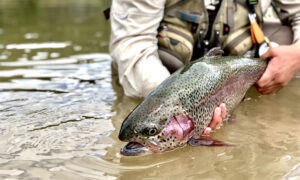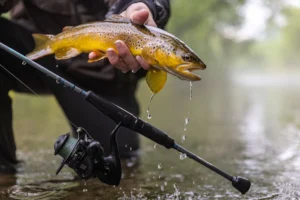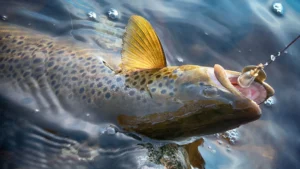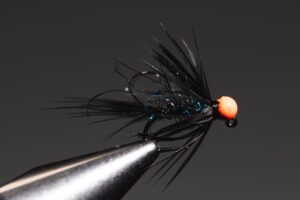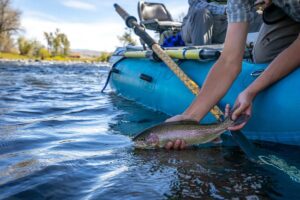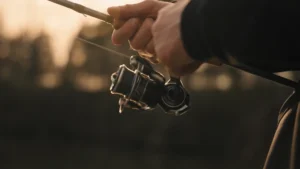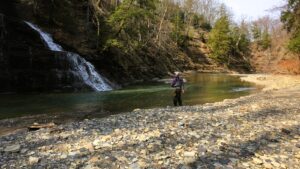If you’ve spent any time fly fishing for trout, you’ve likely heard the phrase “match the hatch.” But what does it really mean, and how can understanding it improve your success on the water? Simply put, matching the hatch is the art of imitating the insects and other food sources that trout are feeding on at a given time and place. Mastering this skill can transform your trout fishing from guesswork into consistent action.
What Is a Hatch?
A hatch occurs when aquatic insects—such as mayflies, caddisflies, or stoneflies—emerge from the water to become winged adults. During these periods, trout often key in on a specific stage of the insect’s life cycle, such as nymphs rising, adults on the surface, or spent spinners floating downstream.
Understanding what’s hatching and when is the key to choosing the right fly and presenting it in a way that looks natural.
Common Insects in Trout Diets
Here are the main insect groups trout eat, each with different life stages you might need to imitate:
- Mayflies: Recognizable by their upright wings and delicate bodies. Key stages: nymph, emerger, dun, spinner.
- Caddisflies: Tent-winged adults, often abundant in spring and summer. Key stages: larva, pupa, adult.
- Stoneflies: Larger insects that crawl out to hatch; important in fast-moving rivers. Key stages: nymph, adult.
- Midges: Tiny, but critical in cold waters or during winter. Key stages: larva, pupa, adult.
- Terrestrials: Grasshoppers, beetles, and ants are important in late summer.
How to “Match” the Hatch
- Observe the Water:
Before you tie anything on, take time to watch the river. Look for insects flying above the surface, resting on rocks, or floating in the current. Use a small net or cup to collect bugs if needed. - Select the Right Fly:
Match the insect’s size, shape, and color. Even if your fly isn’t an exact replica, getting these three elements right will often fool a trout. - Fish the Right Life Stage:
Trout may key in on one particular stage of the hatch. If you see splashy rises, they’re probably hitting emerging or adult insects. Subtle, sip-like rises often mean they’re feeding just beneath the surface. - Present It Naturally:
Even the perfect fly won’t catch fish if it drags unnaturally across the current. Achieve a dead drift with mends and reach casts. In some cases, adding movement (like with a skating caddis) is effective—again, observe what the naturals are doing. - Adapt Quickly:
Hatches can change by the hour. Be ready to switch flies, adjust your depth, or change your tippet size based on what the trout are responding to.
Tools to Help You Match the Hatch
- Hatch Charts: Many local fly shops and online resources provide seasonal hatch charts by region.
- Bug Seine or Net: Useful for catching and identifying insects.
- Fly Boxes: Keep a range of sizes and patterns on hand to cover major hatches.
- Magnifying Glass or Loupe: Handy for identifying small bugs, especially midges.
Final Thoughts
Matching the hatch is part science, part art—and it’s one of the most rewarding aspects of trout fishing. It challenges you to pay attention to the details and deepen your understanding of aquatic ecosystems. With a little practice and patience, you’ll be tying on the right fly at the right time—and watching trout rise to take it.


